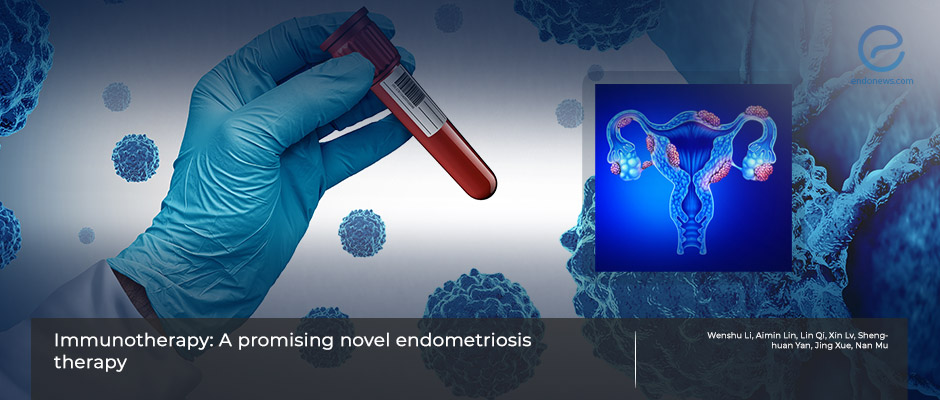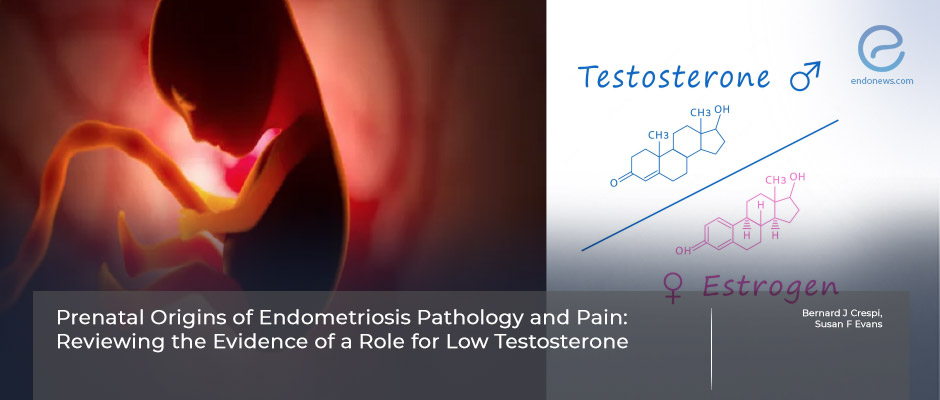 Bahar Yuksel, MD
Bahar Yuksel, MD
Bahar Yuksel graduated from Istanbul University Istanbul Medical School at the top of the class in 2010. She completed her residency in Istanbul Medical School Obstetrics and Gynecology Department with the top score Residency Board Exam. Between 2016 and 2017 she studied at Stanford School of Medicine and did research on ovarian physiology. Her projects were funded by The Scientific And Technological Research Council Of Turkey several times. Her main interests are endometriosis and ovarian physiology. Now she has her practice in Istanbul as an associate professor in Ob&Gyn, cofounder of Endometriosis Research and Support Society, EndoTurkiye, and works for the Endometriosis Foundation of America (EndoFound.org) as Research Associate.
Gene Expression Profiles of Endometriosis and Personalized Treatment
The study lead by Dr.McKinnon from the Institute for Molecular Bioscience, The University of Queensland, Australia, aimed to understand the gene expression profiles of different endometriosis lesion subtypes and their response to hormonal treatment. The researchers analyzed gene expression data from endometrioma, superficial peritoneal lesions, and deeply infiltrating endometriosis.. The authors found that gene expression profiles could differentiate between the lesion subtypes, with endometrioma showing significant differences compared to superficial peritoneal lesions and deeply infiltrating lesions. Additionally, hormonal suppression medication…
Key Points Lay SummaryEndometriosis and breast cancer- love or hate?
Many studies have been conducted to investigate the relationship between endometriosis and breast cancer, but no definitive conclusion has been reached yet. In the study co-authored by Yan and Li et al, endometriosis-related GWAS data was used to determine the causal relationship between breast cancer risk and endometriosis (EMS). The study used a Mendelian Randomization approach to conduct the analysis. The results showed that for every standard deviation increase in endometriosis, the risk of breast cancer decreased by 5.0%. Estrogen…
Key Points Lay SummaryEndometriosis as a "syndrome" made out of different clusters
Endometriosis has been classified according to surgical findings. In the study conducted by Antonio Sarria-Santamera et al., the authors aimed to classify the patients with their comorbidities. The study explored the multidimensionality of endometriosis using cluster analysis. It categorizes women with endometriosis into six clusters based on their comorbidities: clusters 1 to 6 where cluster 1 (less comorbidity), cluster 2 (anxiety and musculoskeletal disorders), cluster 3 (type 1 allergy or immediate hypersensitivity), cluster 4 (multiple morbidities), cluster 5 (anemia and…
Key Points Lay SummaryThe Molecular Mechanisms of how herbal medicine Actaea racemosa modulates Endometriosis Progression
Increased proliferation, dysregulated apoptosis, and a pro-inflammatory and oxidative environment are the hallmarks of endometriosis. In the article published in the Journal of Molecular Sciences, penned by Livia Interdonato et al, the molecular mechanisms of the extract from a plant named "Actaea racemosa" administration in endometriosis were examined, with a particular emphasis on pain, oxidative stress, and proliferation. High-frequency ultrasound analysis was used to track the progression of the disease, and Actaea racemosa treatment markedly reduced hyperproliferation. The administration improved apoptosis…
Key Points Lay SummaryUnveiling the Immunological Puzzle: Modulation of Biomarkers in Endometriosis by Progestin Therapy
The study by Daniela Roxana Matasariu et al., aimed to investigate the effects of progestin treatment on the expression of biomarkers in endometriosis, specifically focusing on osteopontin and CD44; and their potential role in the pathogenesis of endometriosis. The researchers conducted the study on women with endometriosis, both those undergoing progestin treatment and those not receiving any treatment, also added 30 health controls who had a laparoscopy, and no sign of endometriosis was found. They employed an ELISA kit to…
Key Points Lay SummaryPreoperative MRI: A Valuable Tool for Diagnosing Deep Infiltrating Endometriosis
The article by Sebastian Harth et al. is a retrospective study that aimed to evaluate the diagnostic accuracy of preoperative magnetic resonance imaging in detecting deep infiltrating endometriosis based on specific morphological criteria. The study included 160 patients who underwent preoperative MRI for suspected DIE and subsequently underwent surgery with histological confirmation. The MRI findings were compared to the surgical findings to determine the diagnostic accuracy of the MRI. The study found that preoperative MRI had a sensitivity of 67.0%…
Key Points Lay SummaryHarnessing the Power of the Immune System: The Potential of Immunotherapy for Treating Endometriosis
The review article by Wenshu Li et al. discusses the potential of immunotherapy as a novel treatment for endometriosis and the potential to overcome possible side effects and recurrence rates related to conventional therapies. The article explains how immunotherapy, which harnesses the body's immune system to target and eliminate abnormal cells, has emerged as a promising alternative treatment for endometriosis. The article reviews the preclinical and clinical studies that have investigated the use of immunotherapy for endometriosis, including immune cell…
Key Points Lay SummaryAutoimmune Disorders in Women with Endometriosis May Impair Embryo Implantation
The retrospective study by Noemi Salmeri reports the effect of concomitant autoimmune disorders on the ability of the endometrium to support embryo implantation in women with endometriosis who underwent assisted reproductive technology (ART) treatments. The study involved 600 women with endometriosis, with 150 having concomitant autoimmune disorders and 450 without. The participants received ART treatments, which included ovarian stimulation, oocyte retrieval, fertilization, and embryo transfer. The primary outcome of the study was the cumulative clinical pregnancy rate, characterized as pregnancy…
Key Points Lay SummaryGetting help from water to replace colonoscopy and MRI for the diagnosis of deep bowel endometriosis.
This retrospective study by Martyna Masternak et al. discusses the use of rectal water contrast transvaginal ultrasound (RWC-TVS) as a tool for assessing deep bowel endometriosis. The study explains how the procedure is minimally invasive, and how it involves filling the rectum with water and using transvaginal ultrasound to visualize the bowel. This technique allows for the detection and mapping of "deep bowel endometriosis" lesions, which can then be used to guide surgical treatment and might replace MRI and colonoscopy.…
Key Points Lay SummarySpheroids: 3D-mini-models for Understanding Endometriosis
The pathogenesis of endometriosis is not fully understood, and there is a need for better models to study the disease. Spheroids are 3D clusters of cells that mimic the structure and function of endometrial tissue. These mini models have several advantages over traditional 2D cell cultures, including providing a more physiologically relevant environment for studying cell behavior. Spheroids have the potential to be used as models for a variety of diseases, including endometriosis. In the article led by Dr. Fazleabas a…
Key Points Lay SummaryUnraveling the Role of Vascularization in Deep Endometriosis
The systematic review by Simon G. Powell published in the journal Cells, analyzed 15 studies including 1125 women with deep infiltrative endometriosis up to March 2023 in several databases and found that angiogenesis plays a crucial role in the growth and spread of endometrial tissue outside of the uterus. VEGF, namely Vascular Endothelial Growth Factor, is a key regulator of angiogenesis and has been implicated in the development of deep endometriosis. VEGF expression has been shown to be upregulated in…
Key Points Lay SummaryNovel Diagnostic Strategies for the Detection of Malignant Transformation of Endometriosis
Endometriotic implants can grow on various organs and tissues in the pelvis, leading to pain, infertility, and other symptoms. Most cases of endometriosis are benign and there is a small risk of malignant transformation. The review conducted by Dr. Hiroshi Kobayashi from Nara Medical University, Japan, provides an overview of the current understanding of the malignant transformation of endometriosis, its clinicopathological characteristics, and molecular features. The most common type of malignancy that arises from endometriosis is clear cell carcinoma, followed…
Key Points Lay SummaryPregnancy and Endometriosis: The Hidden Risk of Gestational Diabetes
Getting pregnant with endometriosis may be challenging. Besides, that pregnancy is a high-risk pregnancy. According to the recent meta-analysis led by Dr.Vigano, the risk of gestational diabetes increases in endometriosis patients. The study performed database searches on PubMed, Medline, Embase, and Scopus through June 2022 using the keywords of "endometriosis" and "gestational diabetes". Analysis was conducted on 18 individual studies including 4,600,885 women, to investigate the association between endometriosis and gestational diabetes risk. Different potential modifying factors were considered, including mode…
Key Points Lay SummaryExploring the Potential Impact of Prenatal Testosterone on Endometriosis
The exact causes of endometriosis still remain uncertain but emerging evidence suggests that prenatal factors may contribute to its development. In the review study by Bernard J Cresp et al, the authors discuss the hormonal environment during prenatal development and propose that exposure to low testosterone levels could be a potential risk factor for endometriosis later in life. They review existing research studies that provide support for this hypothesis, including animal studies and clinical observations. The article further explores the…
Key Points Lay SummaryDeep Infiltrating Endometriosis and Adenomyosis have different genetic pathways
It is still not defined whether adenomyosis is also a deep endometriosis component or not. In the study conducted by Marshall et al, the researchers compared the gene expression patterns between deep infiltrating endometriosis (DIE) and adenomyosis uteri in order to identify potential dysregulation of oncogene pathways. The researchers utilized gene expression profiling techniques to analyze tissue samples from patients diagnosed with either DIE or adenomyosis. After collecting the tissue samples from patients diagnosed with either DIE or adenomyosis during…
Key Points Lay SummaryInsights into immune dysfunction in endometriosis - Chandrakant Tayade, DVM, PhD
In his speech presented at the Annual International Medical Conference of the Endometriosis Foundation of America held in New York on April 1-2, 2023, Dr. Tayade talks about the relationship between endometriosis and the immune system. Dr. Tayade begins by emphasizing the significance of understanding the immune mechanisms involved in endometriosis, as immune dysfunction plays a critical role in the pathophysiology of the disease. By exploring the immune system's response to endometriosis, doctors can gain valuable knowledge for improved diagnosis, treatment, and management strategies.…
Key Points Lay Summary2023 MedicalConferance: Pros and cons of hormonal interventions for endometriosis - Sarah Berga, MD
Prof. Berga, MD., who is the Chair of Ob&Gyn at Jacobs School Medicine and Biomed Sciences, presented this speech at the 2023 EFA Medical Conference. Dr. Berga explains that the primary goals of endometriosis treatment are to reduce pain and improve quality of life, preserve fertility, and minimize side effects. She then goes on to discuss the different hormonal interventions available for endometriosis. Oral contraceptives are a common first-line treatment, as they can suppress ovulation, reduce estrogen levels, and decrease the size and…
Key Points Lay SummaryA self-diagnostic tool that predicts the likelihood of endometriosis
Early diagnosis and treatment of endometriosis are crucial for preventing these negative outcomes, but the disease is often difficult to diagnose due to a lack of specific symptoms and reliable diagnostic tests. Goldstein et al. aimed to develop a machine-learning model that could predict the presence of endometriosis in women based on self-reported symptoms alone. The authors collected data from 1,592 women who completed a survey of symptoms related to endometriosis and underwent diagnostic laparoscopy to confirm the presence or…
Key Points Lay SummaryThe bigger the uterus, the more painful the dysmenorrhea even if you don’t have endometriosis.
The literature finds no correlation between ultrasound or perioperative findings and pain intensity. Thus, a tool to predict pain intensity will ease the choice for proper treatments and follow-ups. In the study led by Dr. Zhao et al., the ultrasonographic measurements of the uterus have been compared with operative findings and pain (VAS) scales of women with and without endometriosis. Reproductive-age women who applied for abdominal surgery have been included. Demographic data and VAS scales for the menstrual pain intensity…
Key Points Lay SummaryImportance of dynamic cystoscopy for bladder endometriosis.
Bladder endometriosis is a rare type of endometriosis but when diagnosed it requires extensive surgical procedures which include bladder resections. Thus, diagnosis and proper treatment are vital. In the study conducted in Brazil, the authors questioned the accuracy of applying bimanual examination combined cystoscopy to deep infiltrative endometriosis patients. A cross-sectional observational prospective study was conducted and data from patients who have undergone surgery between 2011 and 2022 have been collected. A cystoscopy with a bimanual examination dynamic cystoscopy has…
Key Points Lay Summary


















